|
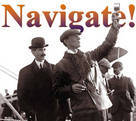
 Up
Up 
 The Lost
The Lost
Flights
of the
Wright Brothers

(You are here.)



  Need
to Need
to
find your
bearings?
Try
these
navigation aids:
If
this is your first
visit, please stop by:
Something
to share?
Please:



|
|
Available in Française, Español, Português, Deutsch, Россию,
中文,
日本, and others.
 ver the
years, friendly folks have sent us faded photographs of Wright airplanes
they discovered in old family albums, the hidden recesses of filing
cabinets, and the darkest corners of attics . We call these photos the
"Lost Flights of the Wright Brothers," and we have collected them here to
share them with you. To our knowledge, none of these has ever been published. ver the
years, friendly folks have sent us faded photographs of Wright airplanes
they discovered in old family albums, the hidden recesses of filing
cabinets, and the darkest corners of attics . We call these photos the
"Lost Flights of the Wright Brothers," and we have collected them here to
share them with you. To our knowledge, none of these has ever been published.



|
|
Huffman
Prairie near Dayton, Ohio
Spring
1910
Winter and spring
of 1910 was a flurry of activity for the Wright brothers. They had just
incorporated the Wright Company and were beginning to manufacture
airplanes in Dayton, Ohio. They were gearing up to make exhibition
flights, and they were interviewing prospective pilots for their
exhibition team, the Wright Fliers. Once they had selected a team,
they opened a
flight school to train these pilots -- first in Montgomery, Alabama, then
at Huffman Prairie when the weather turned warmer.
On top of all that, they were contemplating a major
change in their aircraft design. After the first international air meet in
1909 at Rheims, France, European aviators criticized Wright aircraft with
their distinctive forward elevator or canard as unstable. Compared
to other aircraft, the Wright planes seemed to "gallop" through
the air as the pilot struggled to maintain altitude. Orville was in
Germany at the time, helping to set up a new company to manufacture Wright
aircraft. Responding to this criticism, he mounted a single fixed
horizontal surface (it was not movable) to the outriggers just behind the
rudder and found that it did indeed make the airplane more manageable.
Arriving back in Dayton as winter set in, he convinced Wilbur to test the
new configuration.
They added a rear elevator to work in concert with the
forward canard and began to fly with dual elevators in early 1910, first
at Montgomery and then at Huffman Prairie. These photos show flights in
late spring at Huffman Prairie of
what the late aviation historian Wilkinson Wright called the "Wright
Model AB." This was a transitional design between the Wrights’
first commercial aircraft, the Model A (with the elevator in front), and
the Model B (with the elevator in back). The aircraft retained all the
distinctive features of their earlier models, including the launching rail
and landing skids. But many of these were about to change, too.
|
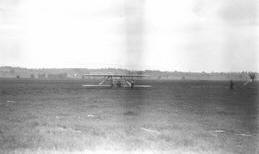
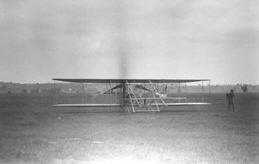
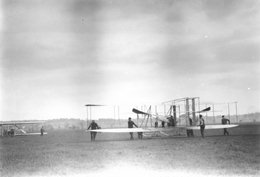 |
|
|
Missouri
State Fair at Sedalia
October 1 through 7,
1910
By
the fall of 1910, the Wright Fliers were seasoned exhibition
pilots, some with over twenty hours of flight time. Wright aircraft design
was still in transition, and the pilots were testing new features in the
field. The Wright brothers added wheels to the landing skids and disposed
of the launching rail. They also made the rear elevator a permanent
fixture, but had not yet completely disposed of the canard.
These photos show a previously unknown Wright aircraft
that seems to have been adapted from an older Model A so that it can be
flown with or without a canard. Over the space of several days while the
Wright Fliers are flying at the Missouri State Fair, the airplane is
photographed in the air in both configurations. Note the canard braces
that jut forward at an angle from the skids. Even when this airplane is
put together without a forward elevator the braces remain, sticking out in
front. The semicircular "blinkers" that were once mounted
between the canard surfaces are now attached to the skid braces. In later
Wright aircraft, these will become triangular in shape.
Although we can’t know for sure, the most likely
reason that this airplane was flown in different configurations is that it
was an experimental aircraft. The Wrights were undecided as to the
best aeronautical design, so they had a pilot fly the same airplane with
and without a canard and report the results. The designated test pilot was
Archibald Hoxsey, one of the most trusted of the Wright Fliers.
From the state fair, Hoxsey took the aircraft to an air meet in St. Louis
where he flew President Theodore Roosevelt on October 11, 1910 -- the
airplane had no canard for this flight. Hoxsey apparently reported that he preferred the aircraft without the
canard. When we next see this distinctive airplane, Hoxsey is racing it at
Belmont, New York between October 22 and 31. The canard is gone, never to reappear, but the braces
remain.
These test flights led to the development of the Wrights’
most popular design, the Wright Model B, which the Wright brothers
introduced in Belmont. This was the aircraft which first
introduced much of America to the wonders of flight.
|
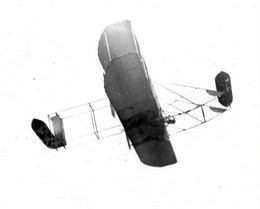
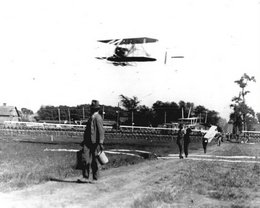 |
|
|
|
|
|